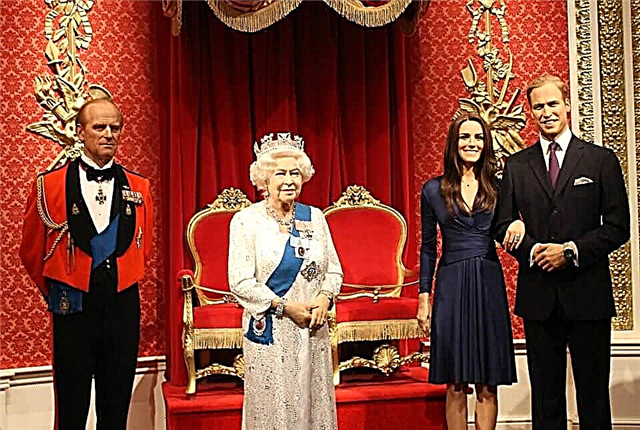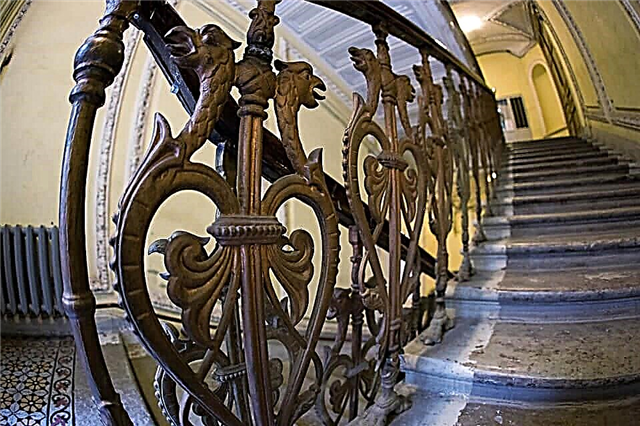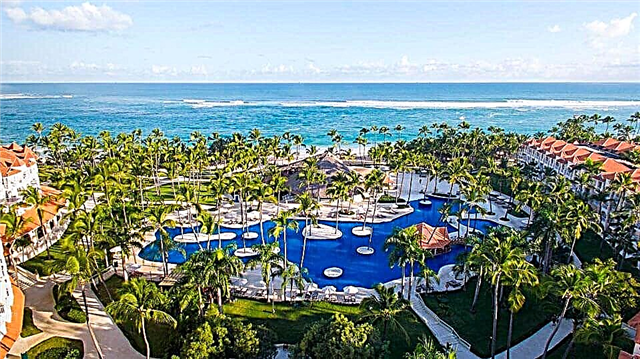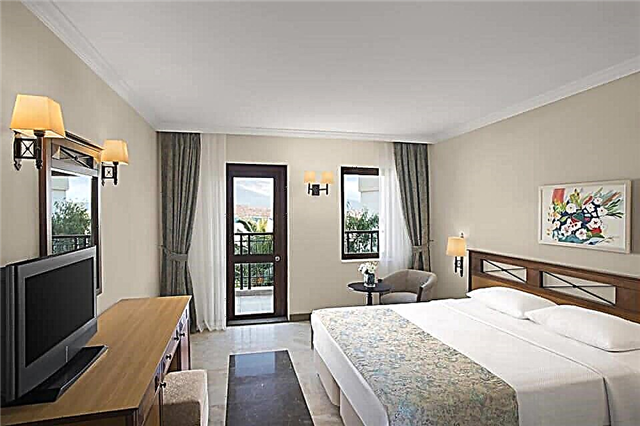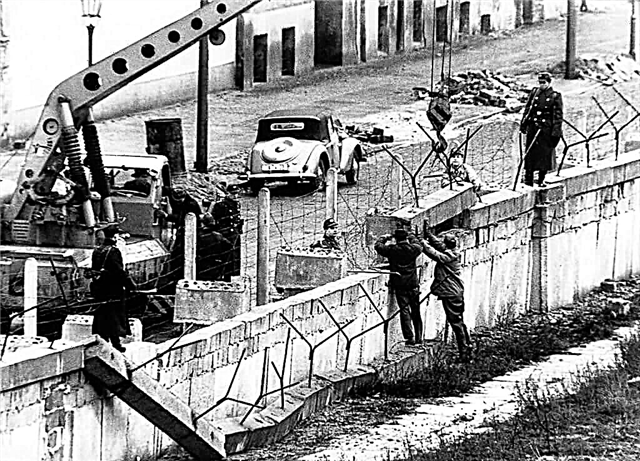Tsar Ivan IV ordered to build an unusual temple in order to glorify the victory of his troops in the struggle against the Kazan Khanate. The site for the church was chosen in the very center of the city. There are several hypotheses about who supervised the construction work and created the plan for St. Basil's Cathedral.
Construction history

In the records of the 17th century. the famous master of stone crafts Ivan Barma and the Pskov architect Postnik Yakovlev are mentioned. According to a popular legend, after the completion of the construction, they were rendered blind by the order of the sovereign. In such a barbaric way, the king allegedly secured the copyright for the unique appearance of the building.
Another version claims that an unknown Italian architect worked on the temple, who managed to embody the features of the Byzantine and Western European styles in the construction.
In the 17th century. the chapel in honor of Vasily Nagy is being completed, the church of the Virgin Feodosia is being erected over the porch, awnings are being erected over the stairs, the gallery is protected from above by a roof, a 2-storey bell tower appears.
In the 18th century. after the demolition of wooden churches on Red Square, the thrones of them were moved to the boundaries of the cathedral and the names of some were changed.
The significance of the cathedral in the USSR

After the 1917 revolution, religious activities in the temple were banned. The building was turned into a museum. Restoration work was consistently carried out in it.
In the 30s. the monument to Minin and Pozharsky was moved to the walls of the cathedral. According to one of the plans for the improvement of the city, it was supposed to demolish the church in order to expand the territory of Red Square. However, the temple was defended.
In the middle of the 20th century. An inscription was found on the wall indicating the exact date of the completion of the construction - July 12, 1561.
Cathedral in 1991-2014

The temple has long been considered a kind of "visiting card" of Russia, one of the symbols of the Orthodox faith. In the early 90s. it was returned to the Russian Orthodox Church. In the chapel of St. Basil the Blessed, regular services began to be held.
As an outstanding monument of ancient Russian architecture, the building was included in the list of World Heritage Sites protected by UNESCO.
The restoration work carried out in the premises of the complex made it possible to recreate and update the picturesque frescoes on the walls and facade.
The Cathedral of the Intercession was nominated by Russia in the Seven Wonders of the World competition. He has repeatedly become the winner of international and national championships:
- "Miracle of Russia" (2008)
- "A Changing Museum in a Changing World" (2011)
- Best of the Best in Tourism (2014)
The temple is a symbol of the daring of Ivan the Terrible

Tsar Ivan IV went down in the history of Russia as the ruler who laid the foundation for the expansion of the state. He organized and carried out a number of military operations that strengthened the borders of the Moscow principality and turned it into a single integral power. The expansion of territories was due to the annexation of the Volga khanates. The culmination of the political intervention was the capture of Kazan, which had opposed Moscow for many decades.
This significant event took place the day after the celebration of the Protection of the Most Holy Theotokos, October 2, 1552.
The erection of the cathedral was to, on the one hand, perpetuate the memory of the victory, and on the other hand, symbolize the unification of territories under the auspices of Russia.
Thus, the idea of Ivan III that the Moscow state was destined to take over from Byzantium and become the Third Rome was brought to life.
Origin of name
The cathedral was erected in honor of the celebration of the Protection of the Most Holy Theotokos. On this day, they remember the event that occurred during the siege of Constantinople. The Mother of God heard the prayers of the townspeople and covered the city with her veil, thereby protecting it from enemies.
Since the place for the church was located near the Alevizov Moat, which surrounded the Kremlin, the full name of the Cathedral of the Intercession of the Most Holy Theotokos on the Moat.
After the construction of the chapel of St. Basil the Blessed, its name was transferred to the entire complex.
Architectural composition
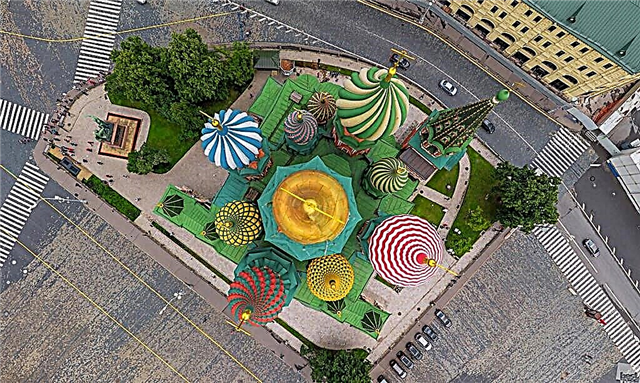
The building layout is characterized by 3 features:
- lack of a single facade
- octagonal star configuration
- replacing the basement with a basement
For the construction of the temple, a fill mound was created at the site of the moat. This explains the impossibility. The uniqueness of the structure is that the entire temple complex was erected on a single basis. As conceived by the builders, the side-altars were united by a common gallery.
The chapels are dedicated to the holidays and the memory of the saints, whose days coincided with the dates of the victorious battles of the Kazan campaign:
- Holy Trinity
- The Lord's Entry into Jerusalem
- Nicholas the Wonderworker
- Gregory Armenian
- martyrs Cyprian and Ustinia (later martyrs Adrian and Natalia)
- Alexander Svirsky
- Wonderworker Varlaam Khutynsky
- Saints Paul, John and Alexander (later John the Merciful)
Brick was used as a building material. The lower part was made of white stone. To strengthen the building, the masonry was additionally fixed with metal clips.
The complex has a small size:
- the height of the main pillar - 46 m;
- total area 60 sq.m.
Interiors

The cathedral is distinguished by its decorative appearance, polychrome ornaments and paintings, skillful combination of various architectural elements.
The complex stands on a single basement that replaces the foundation. The vaults inside the buildings are supported by pillars. For ventilation, narrow slotted holes in the walls are used - air vents. Natural light streams in through a drum of light under the dome of the church.
The decoration of the chapels is distinguished by a combination of color and manner of painting. The frescoes were applied with oil paints. The temple contains a huge collection (over 400) icons (16-19 centuries). Most of them were created by Novgorod and Moscow painters.
Chapel of st. Basil the Blessed

Basil the Naked or Blessed One became famous during his lifetime for his pious deeds. His predictions often came true, so even the king listened to the words of the holy fool. After the death of the elder, Ivan the Terrible ordered to bury the body in the cemetery near the Kremlin walls, in a ditch.
Later, the Intercession Cathedral was erected next to it. Tsar Fyodor Ioannovich ordered to erect a chapel over the grave of the saint. He received the name of Basil the Blessed. The relics of the holy fool were placed in a shrine and transferred to the cathedral.
The chapel has the shape of a cube, which is crowned with a small dome. The interior is decorated with oil painting. It has been preserved since the beginning of the last century (1905):
- Savior the Almighty - in the center, under the dome
- Forefathers - around the drum of light
- Deesis and evangelists - on the vaults
- The life of St. Basil the Blessed - on the walls from the north and south
- The Protection of the Most Holy Theotokos - on the wall in the western part
The side-chapel walls are conditionally divided into upper and lower parts:
- at the top are the patron saints of the royal dynasty
- below - an ornament in the ancient Slavic style
The floor of the building is covered with slabs cast from cast iron in Kasli.

An iconostasis of an unusual shape is installed in the chapel. The compressed volume of the room did not allow placing icons along one wall. Therefore, according to the plan of the architect A. Pavlinov, some of the images were transferred to the side walls. This type of iconostasis was named "with twists". Most of the icons were painted by artists headed by O. Chirikov at the end of the 19th century.
The southern wall is decorated with a huge icon of the Virgin of Vladimir, made on a metal base. It depicts the Mother of God surrounded by Moscow saints.
The grave of Vasily Nagy is marked with an arch. His shrine with relics disappeared in the early 17th century. Only the cover has survived. It was embroidered by craftswomen from the environment of Irina Godunova.
From 1929 to 1991, the side-chapel was closed. Divine services were resumed in 1997.
How many domes

Since the cathedral is a temple complex, there are 10 domes in it.Each dome is crowned with corresponding thrones located on opposite sides of the central Pokrovskaya Church. The tenth dome rises above the bell tower.
The heads of all churches are in the form of onions. They differ in a variety of patterns and colors. The Church of the Intercession has a tent-shaped pommel with a small dome.
Interestingly, the total number of domes has decreased 2.5 times compared to the original. At first, the cathedral was decorated with 25 chapters. The central one stood for the Lord, and his entourage - 24 elders, sitting on the sides of the throne.
Museum

After the termination of services, by decision of the Soviet government, the building of the temple from the beginning of the 20s. began to be used as a historical and architectural museum. An exposition opens in it, funds are formed, research work begins.
Since 1928 the museum has become a subdivision of the State Historical Museum. His exhibition activities were anti-religious. In parallel with the work of the exposition part, large-scale restoration activities are being carried out in the building.
The museum stopped working in the period 1941-1947. Over the years, the room was presented with thematic collections dedicated to the construction and architecture of the 16th century, bibliography of the 16-20th centuries, the conquest campaigns of Ivan the Terrible.
The Church of the Intercession is one of the main tourist attractions in the capital. Since 1991, along with the museum, religious activities have been resumed in it.
Major collections:
- weapons of the 15-16 centuries.
- bells of the 16th-20th centuries
In 2014, the permanent exhibition "Treasures of the Intercession Cathedral" was presented to the attention of visitors. At the bottom of the building, tourists get acquainted with the history of the temple. In the upper part, the audience examines ancient interiors with elements of paintings and sculptural works by masters of ancient Russian art.
Working hours
Opening hours vary throughout the year and depend on the season. As well as weather conditions. When the temperature drops below -15C °, the temple complex remains closed.
| Schedule | 1.06-24.08 | 25.08-3.09 | 1.05-31.05 and 4.09-7.11 | 8.11-30.04 |
| Working time | 10-19 hours | 10-16 hours | 11-18 hours | 11-17 hours |
| Output | Wednesday | Wednesday | not | not |
The cleaning day is held monthly on the first Wednesday.
How to get there

The cathedral rises in the immediate vicinity of the Kremlin walls and the Moskva River embankment. Its official address is Red Square, 2.
You can get to the temple by ground and underground transport.
Metro:
- to st. "Kitay-gorod" (walking along Varvarka street to the Bolshoi Moskvoretsky bridge)
- to st. "Okhotny Ryad", "Teatralnaya", "Ploschad Revolyutsii" (from Manezhnaya Square on foot along Ilyinka Street to Red Square)
By bus:
- No. 25 to the stop. "Red Square"
- № Н1 and Н2 (night), 12ts and 144ts to the stop. "Theatre square"
- No. 158, H4 and H5 (night) to the stop. "Slavyanskaya square"
On trolleybuses No. 16, 45, 63 (round-the-clock) to the stop. "Slavyanskaya Ploschad".


